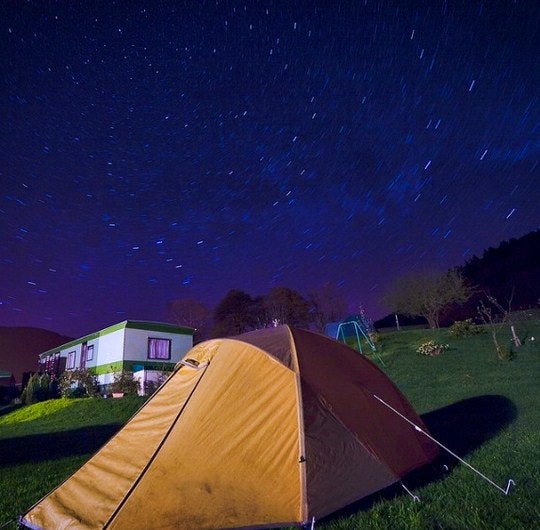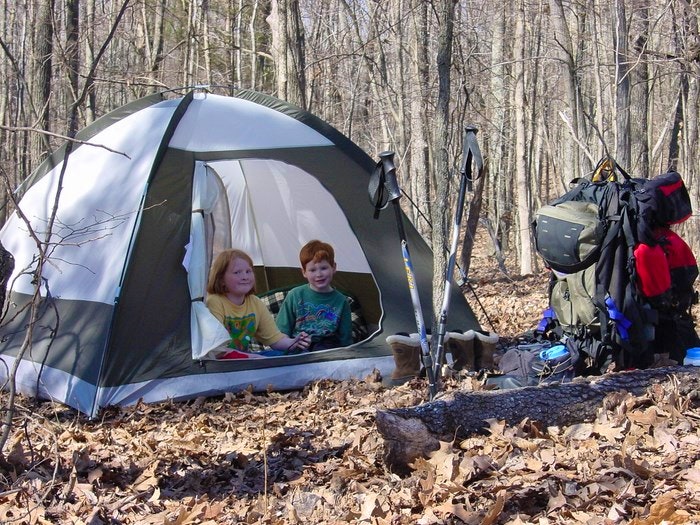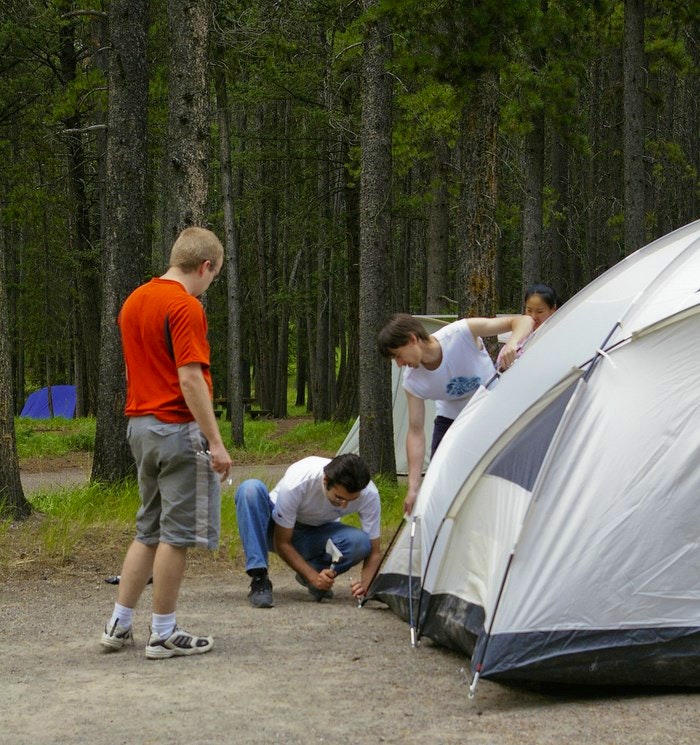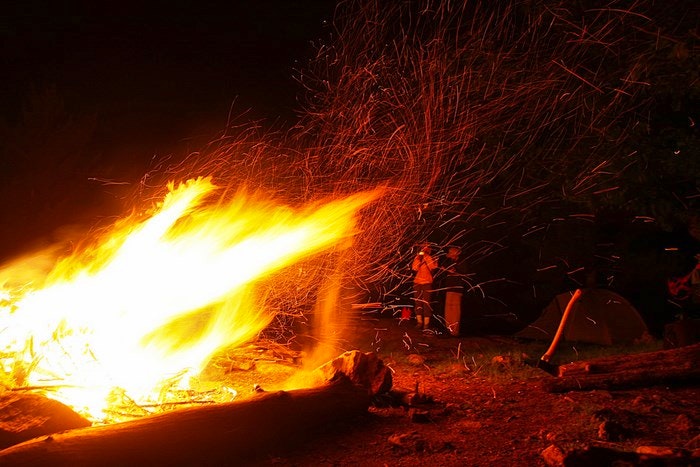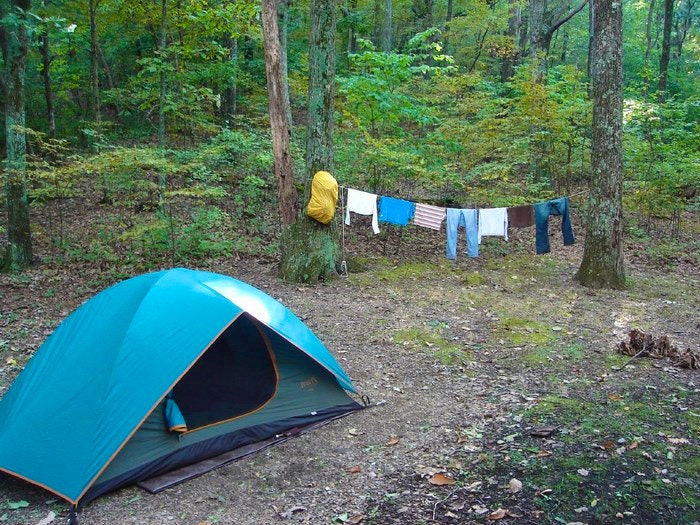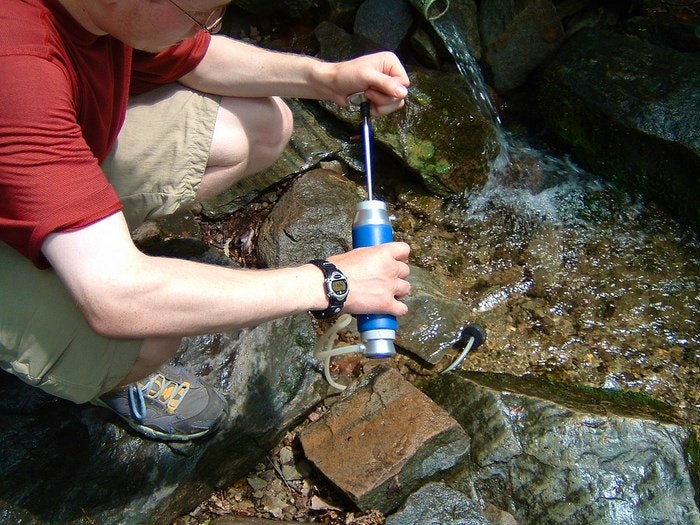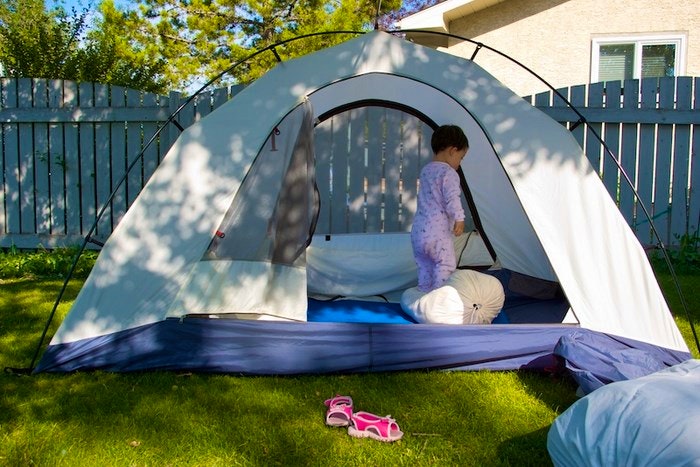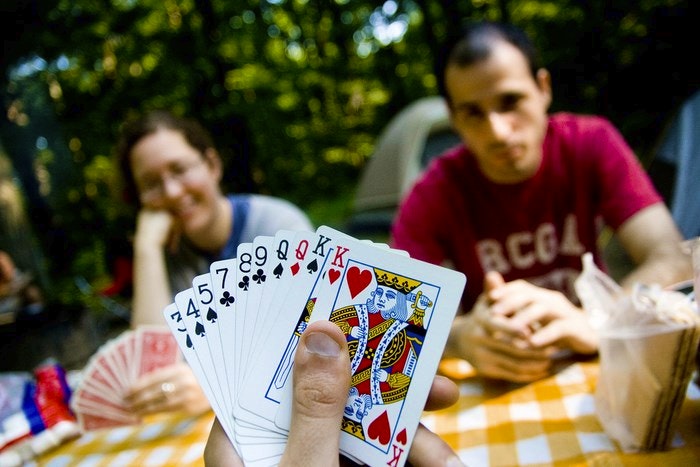So now you’re out in the big outdoors – your roof a canopy of canvas – or stars if you prefer. There’s a big campfire crackling in the centre where you’re braaiing some tasty wors – and later marshmallows – with the relaxed comradery of having close friends around. But lets re-wind a few steps before this picturesque scene and focus on making your campsite perfect for your time away. If you read my first camping post, you should know what gear to bring. Now, onward to your campsite!
Scout
When you arrive at your camp site, check where you’ll be pitching your tent (and no, this isn’t something only the guys can do). The camp site should be far enough away from water or depressions in the ground, so if the rain comes down, your tent doesn’t flood. Your camp site should also not be set up over an ant colony – if it is, it will lead to several painful days with your new outdoor “friends”. If you’re on a hill, ensure you pitch your tent so your head is facing up the hill, and you’re feet down it, although it’s best to avoid all hills and slopes if possible. The area you pick should be flat, dry and sheltered in some form – the best spots are on slightly elevated ground. Tree’s though sturdy looking, often harbour unthought of dangers – such as birds who’ll use your tent roof as their new bathroom – and don’t forget that a safe looking tree could also become a lightning rod during a storm – a thicket of trees is better.
Pitch
Now you know where to set up camp, do you know how to set up that brand spanking new tent? If you’re a seasoned camper, stop rolling your eyes and just skip this paragraph. Before laying your tent out on the ground, clear away any little rocks or branches in the way – you don’t want one poking through into your new air mattress late at night. Now check which way the winds blowing, and ensure your entrance is on the opposite end. Once you’ve gotten the skeleton in place, peg down the four corners. Most people presume that putting tent pegs into the ground involve holding them straight, and then just pounding them in – it works, but not well. Rather slant the pegs at a 45° angle before hitting them in – its a much better angle and your tent will hold fast during bad winds. If you are worried about a storm, don’t forget to attach the ropes on the side of the tents, and also remember to attach the fly sheet clips directly to the poles near the base points, as they help to strengthen your tent overall.
Setup
Your tent is up, your mattress is stowed inside, your bags are packed safely away, and you remembered to hang a lantern in the centre of your tent for later when it gets dark (and set your headlamps under your pillow so you can find them later too). It’s time to setup the rest of your campsite. Figure out where you’ll place your fire – and ensure it’s far enough away from the tents that a stray spark won’t destroy your abode. A ring of stones around a self-dug pit works well at containing the blaze – but never leave it unattended. Next, your camping kitchen should be close to a water source if possible, and the soaps you use biodegradable. Lastly, if you’re really roughing it and there are no on-site showers or toilets, take a spade, toilet paper and find a secluded spot far enough away from camp you won’t be stumbled upon by a fellow camper, but not far enough away they won’t hear you shouting if you’re attacked by wild squirrels.
Clothing:
Depending what time of year you go, and how long you’ll be out in “the wild”, the clothing choices you make can vary. This short list below should cover most of the basics for a few days out and about.
1x bather (in case there’s a swimming opportunity).
7x pairs of underwear.
1x sleeping attire.
5x socks.
3x t-shirts.
2x tank tops.
2x long shirt.
2x jeans.
2x shorts (or 2x skirts / dresses for the ladies).
2x flip flops (one for general use, the other for when you head to the communal ablution blocks … you never know what lurks amid the damp shower floor).
1x takkies – and if you’re uber active – 1x hiking boots.
2x towels (or only the one if you’re not going to be doing any swimming).
1x jersey or cardigan.
1x waterproof and windproof jacket.
The above list may be a bit too short for those new to camping, and too long for the pro’s – but either way, don’t bring your entire wardrobe, and no you shouldn’t bring your brand new Diesel jeans either. Camping is about having fun in the outdoors – and trust me, after three days no one is going to notice that cute new dress you brought, which may ultimately end up muddy or torn. Older, durable items which can be worn in layers win, hands down.
Some handy tips:
- When pitching your tent and it has roof poles, follow the seams on the tent, and you won’t go wrong.
- Take wet wipes / makeup cleansers to skip the evening shower on days you don’t pong too badly. You can use them to wipe your face, feet, arms and hands before you settle in.
- Dry shampoo is still one of the great miracles of the 21st Century – you spray it on, leave it in for 30 seconds, and then brush out. Voila, your hair is less oily, smells good and most likely won’t need a wash for at least another two days!
- A blanket spread inside on the floor will add another layer of protection if there are tree roots below – and it doubles as a mat to shake out when you depart. You’d be surprised at how much dirt can accumulate in a short time span.
- Keep a jacket on hand for when it gets nippy later – you don’t want to have to search for it at the bottom of your bag. Under the pillow is my general go-to spot, but maybe you prefer yours by the door.
- If you’re on an extended trip, make sure you have access to a source of clean water. Or else bring along a few gallons of safe drinking water. Either way, make sure you have some kind of purification tablets or one of those newfangled filtration straws so you’re not in a tight spot if your current water supply runs out.
- If your campsite is on tough ground, you’ll be glad you brought that mallet/hammer and a few additional sturdy tent pegs.
- Keep your food together. Hikers have been known to keep their main food items in a sack or two and then hang these bags from trees or high points for safe storage at night. When camping, a storage box works well.
- A kiddies tent works well if your child is old enough to stay by themselves for a night, or share it with a friend – otherwise letting them share your tent will work wonders at soothing any worries they (and you) may have.
- Bring an extra length of para-cord to rig a make-shift washing line for any wet clothes.
Camping with Kids
Your little angels will probably be a bit apprehensive if this is their first camping trip, but as long as everyone is in a good mood, using positive words like “Adventure” or “Exciting”, they should soon be infected with the enthusiasm and start to have fun. The best way to test the waters is to take them camping in the back garden a time or two before hand, or show them a camping scene in a book or movie. The above clothing list works well, but always take extra socks, underwear and shoes for children – and diapers if necessary.
One of the best ways to make children feel at ease on their first camping trip, is to get them to help out around camp once you’ve arrived – be it carrying cups to the table, moving a sleeping bag into the tent, or handing out plates at meal times. This way, they’ll feel included and it’s also good practice for when they’re older and will need to help out. A spade and bucket are great items for very little ones, who’ll spend an hour or two digging happily, allowing you to get on with your own affairs for a while. Once they’re bored of digging, take a walk with them and point out any bugs, or unusual plants and bring crayons and a notebook to do leaf rubbings with them. Don’t forget to bring small toys, colouring books and cards for rainy days.
My husband and I, as well as a close family friend went camping last year, along with her two year old son. We were worried that the little one wouldn’t enjoy himself, but he had an absolute ball! Sure he got grumpy and tired at points, but give a kid a break – he was a little ray of sunshine at most points, and his face when he bit into his first toasted marshmallow was priceless!
If you’ve been camping with children, how are some of the ways you entertained them? Anything left off the lists you think should be added? If so, let us know in the comments section below, or leave a comment on our Facebook page.

